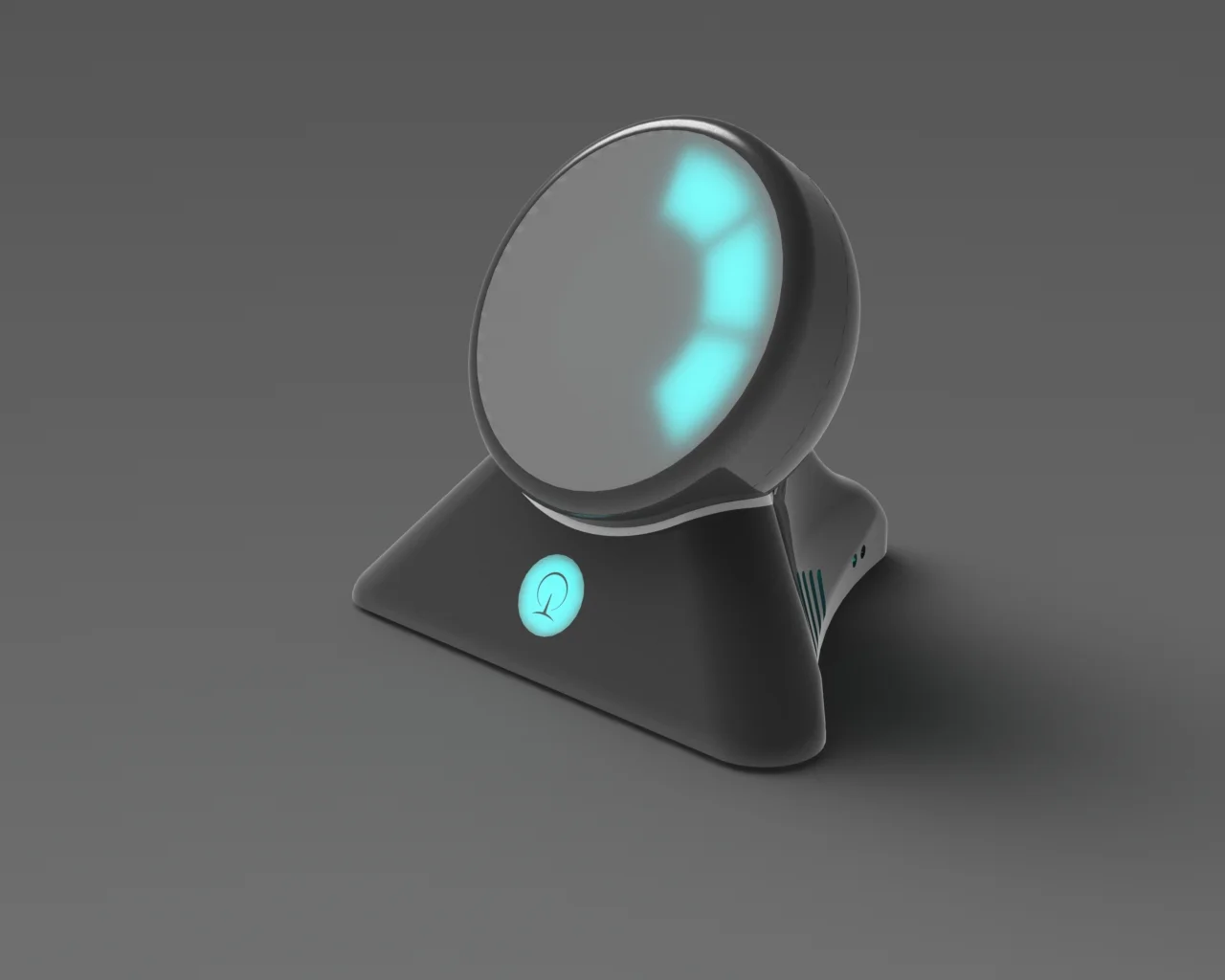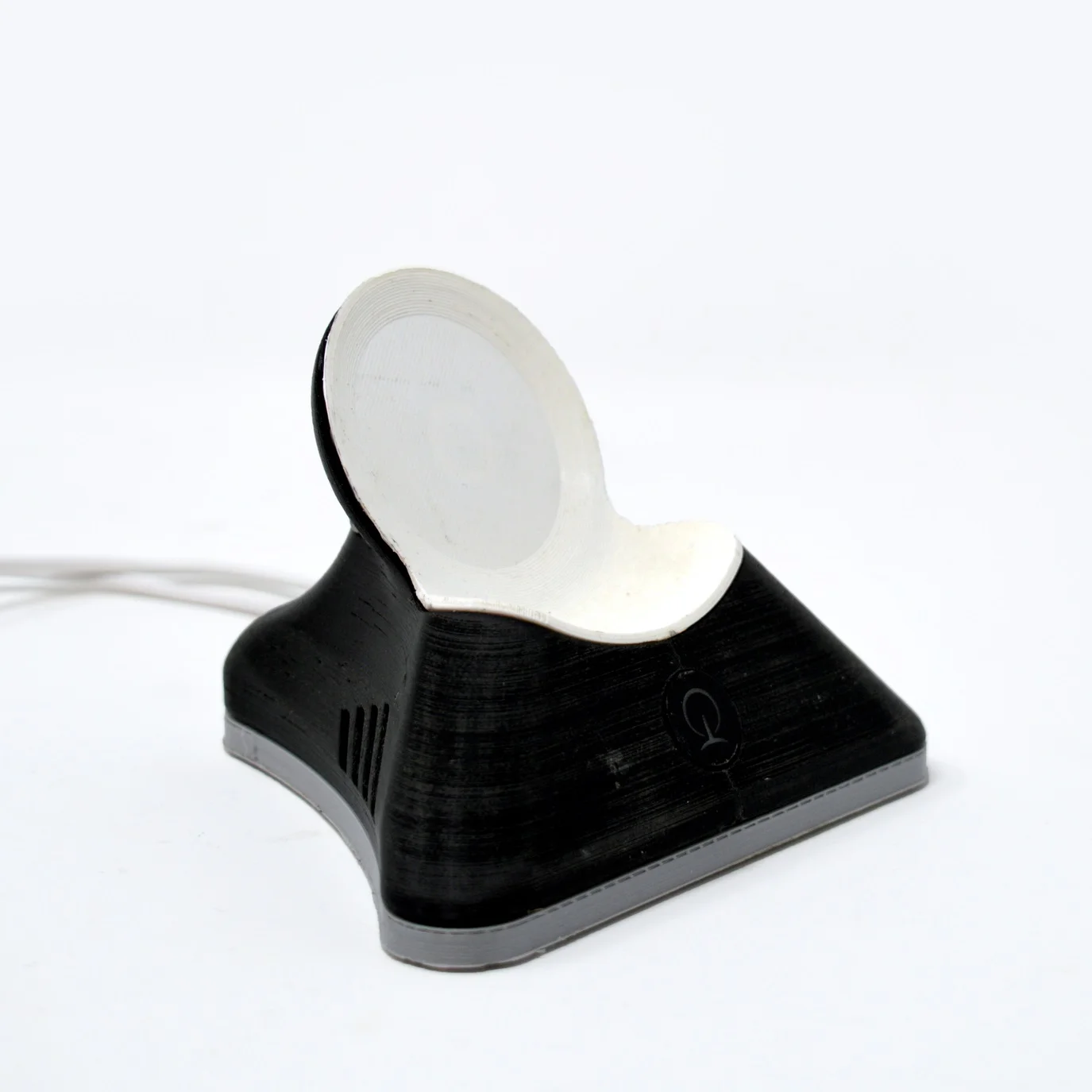
BRIEF
‘design and engineer a battery powered hand-tool for home, garden or educational use, that not only appeals to the mass market, but also meets the needs of a specific (underserved) user group. Design and develop an inclusive consumer product that genuinely deserves to exist!’
May 2019
SKILLS
product design
electronics
interaction
On this project, I was in charge of all the casing design, CAD, interior component layout and most component selection. I also lead on the electronics and signals development for environment sensing through the microphone - creating my own matched filter that functioned on and Arduino.
the problem
One of the fastest growing past times at the moment is that of intensive gaming. Fuelled by the rise of eSports and the popularity and accessibility of online play, it’s no wonder that in 2017, 32.4 million people played video games in the UK. Of all these players, over 20% game for more than 12 hours a week, often for unhealthily long sessions. Combine this with the addictive, dopamine triggering nature of the games we play, and you find that many gamers have very little control over how long they play for. This can cause problems such as: repetitive strain injuries, insomnia and back pain.
At MICO, we want to change that.
the solution
We spoke to a physiotherapist, to see how best to tackle these physical and mental issues - without preventing the gamer from playing. From this we learnt that the best way was just to take regular breaks
but how can we get someone to take a break from such an addictive pastime…
We developed MICO, a physical gaming assistant who silently alerts you when its time to take a break.
Mico takes in data from the gamers environment and analyses it to work out when to alert them. It selects low intensity periods to unobtrusively signal them, so as not to distract them from the game. This version of MICO works on tackling gamers who primarily use PC.
the interaction
MICO sits on the users desk and analyzes their gameplay
Using a microphone to analyse game music, sound effects and keyboard intensity and a touch sensitive mousepad to monitor mouse movement, MICO generates an understanding of the gamers intensity
when MICO detects a period of low intensity, it silently alerts the gamer with an LED display
To prevent interrupting the gamer at critical points in the game, MICO only alerts them during periods of low intensity. Even then the alert is silent and ignorable, whilst still fitting in with the gaming aesthetic.
once alerted, the user is encouraged to engage with MICO by lifting it off the base
This physical interaction is key to MICO, it creates a tangible action that the user can associate with taking a break. BY holding onto MICO the user is also prevented from continuing to play the game
MICO records the break, and alerts the user when they’ve rested for long enough
Using data from physiotherapists, MICO calculates an appropriate amount of time for the user to rest (about 10 - 20 seconds), and counts it down for them using the display. When they’re done, they can get back to gaming!
the design
The design can be split into three separate components: the base, the object and the mousepad
base
the base uses a microphone to gather data from the users environment
The microphone in the base analyses sounds such as the tempo and volume of the game music, the type of sound effects and the frequency of keyboard clicks or button presses. This is done with whilst maintaining the gaming aesthetic
this prototype of MICO separates keyboard click signals from the environment and processes them
By applying a matched filter on a set of arduinos, the code suppresses all signals that weren’t those of a keyboard click in real time, allowing a game intensity profile to be generated.
object
the object is the key interaction between MICO and the user
The LED display uses motion and colour to pass on all information to the user. We found that users engaged really well with the action of picking up the object to acknowledge the alert state. It features wireless charging, and connects to the base via Bluetooth.
mousepad
using a capacitive sensing matrix, the mousepad tracks the users intensity
The mousepad allows MICO to track the users gameplay, without them having to download potentially hackable monitoring software onto their computer.






















